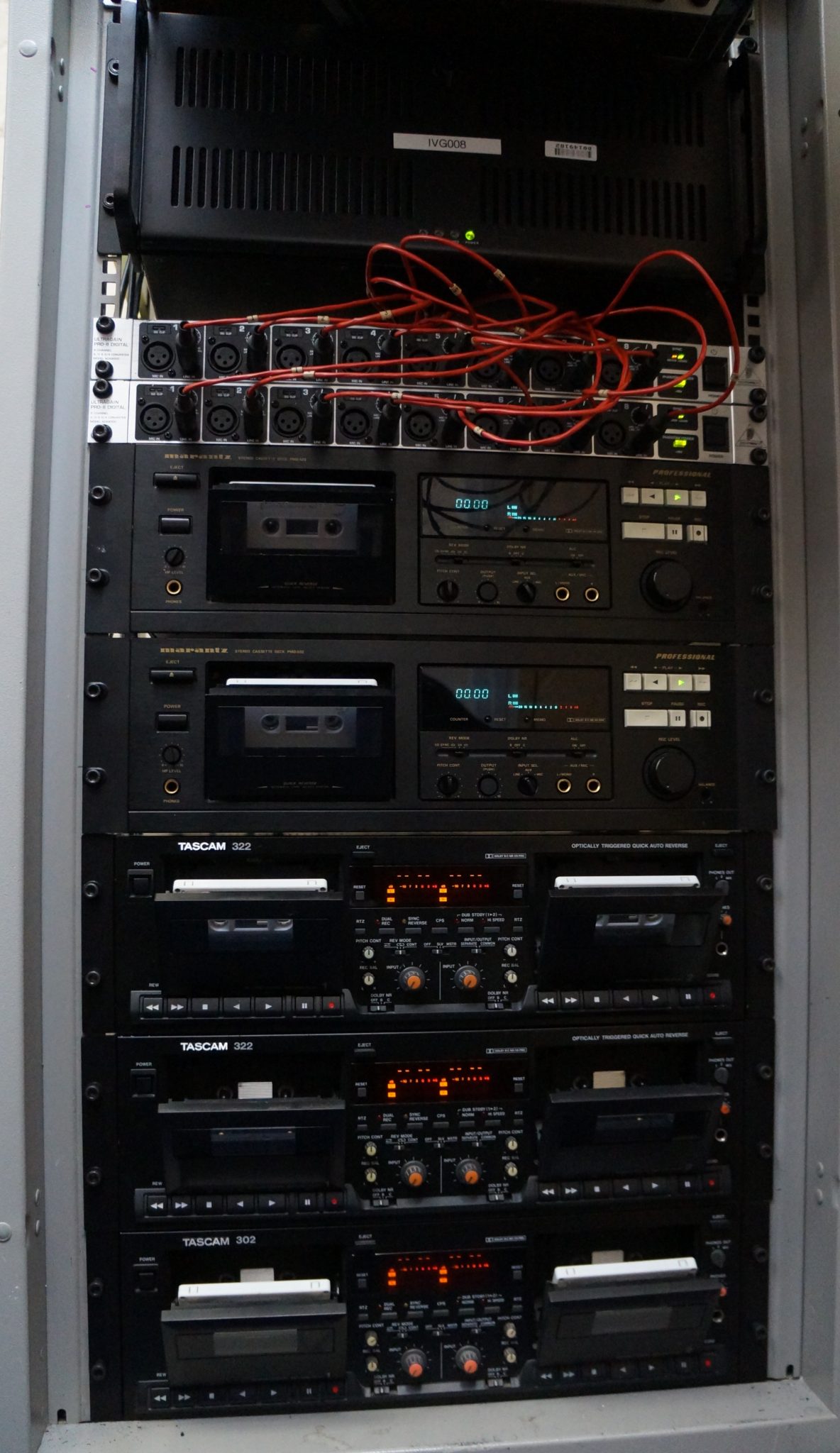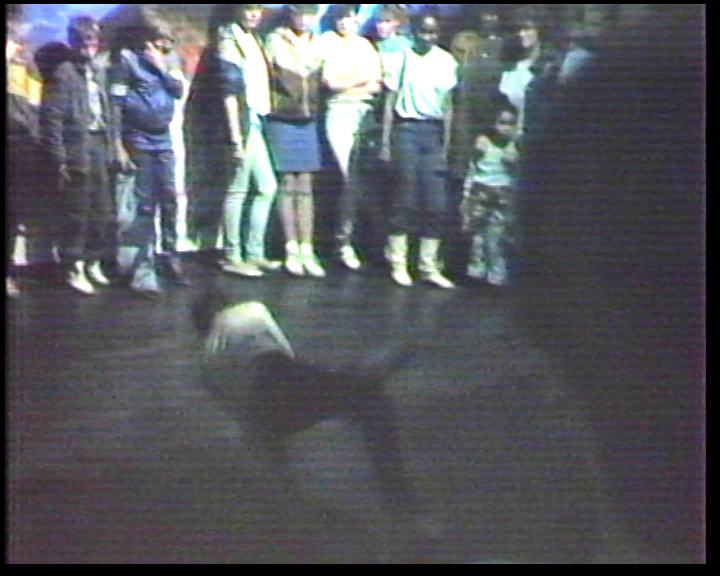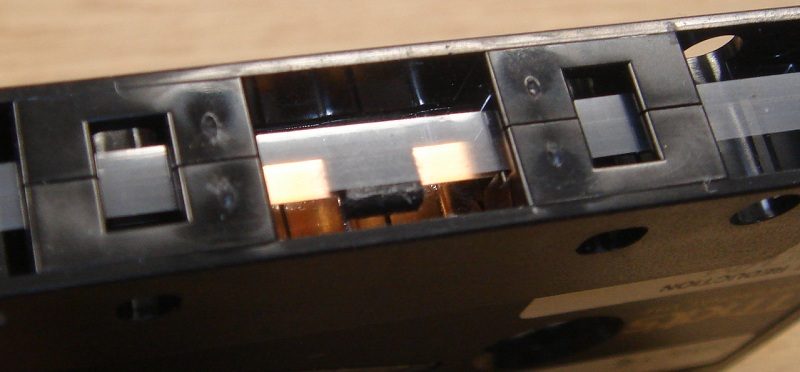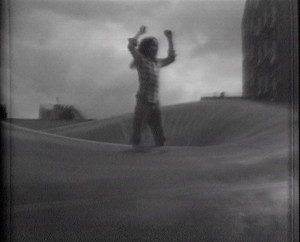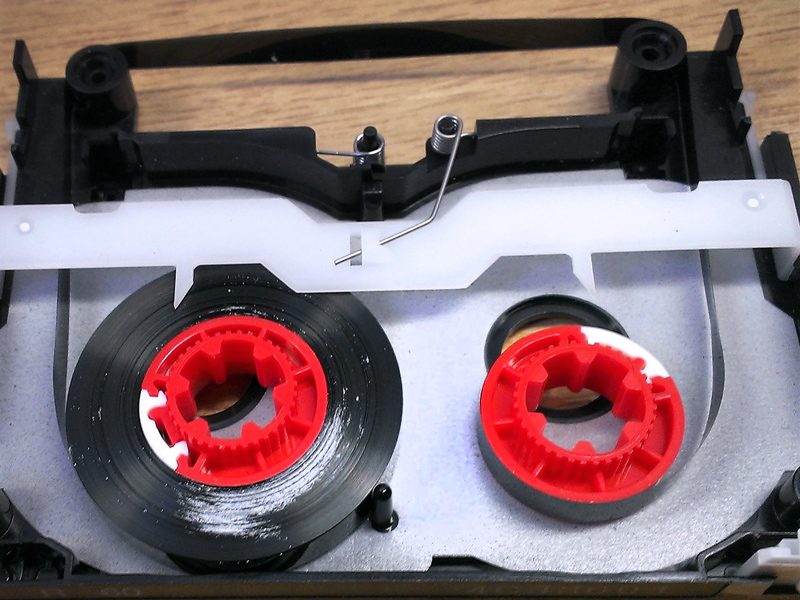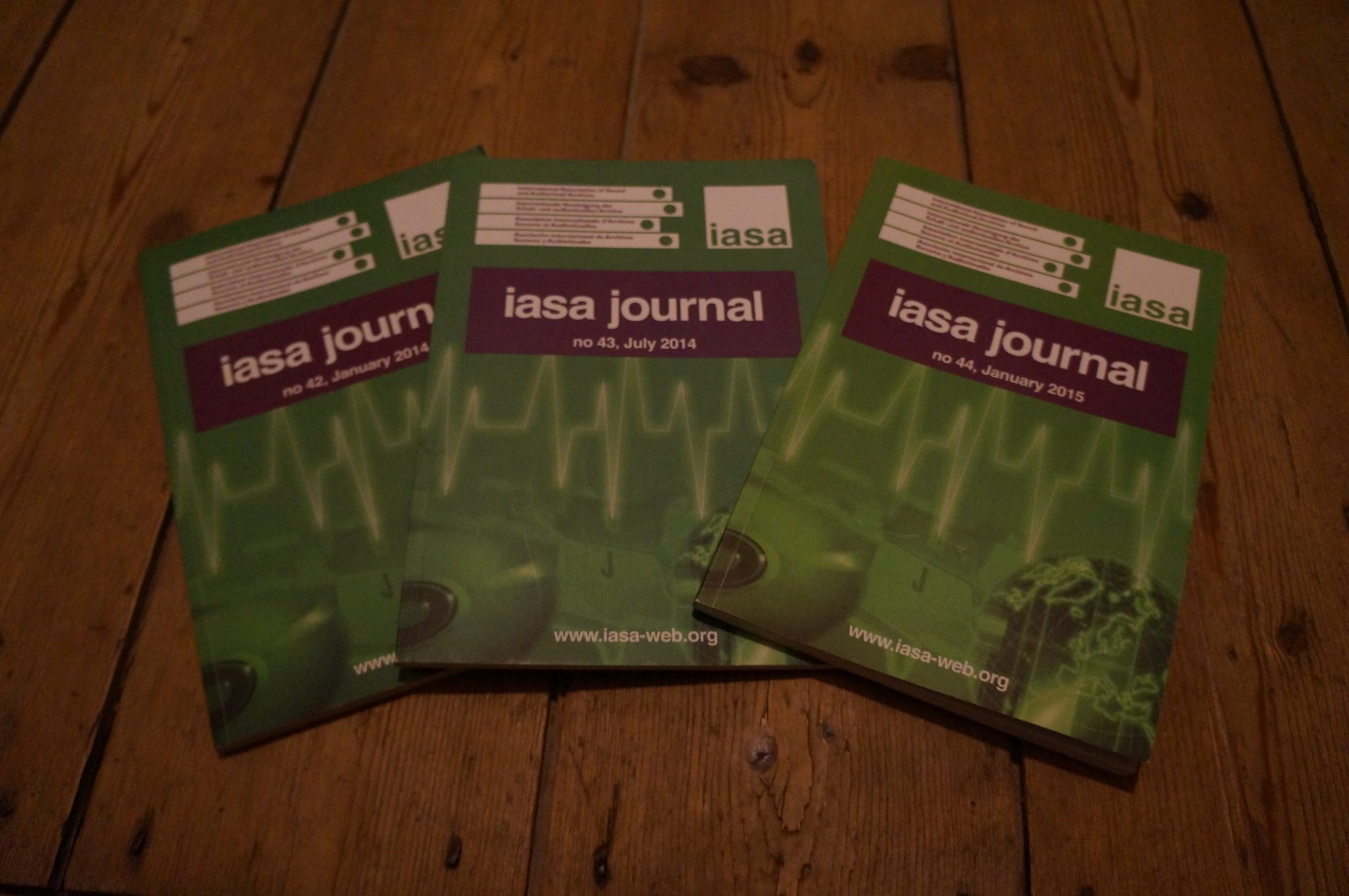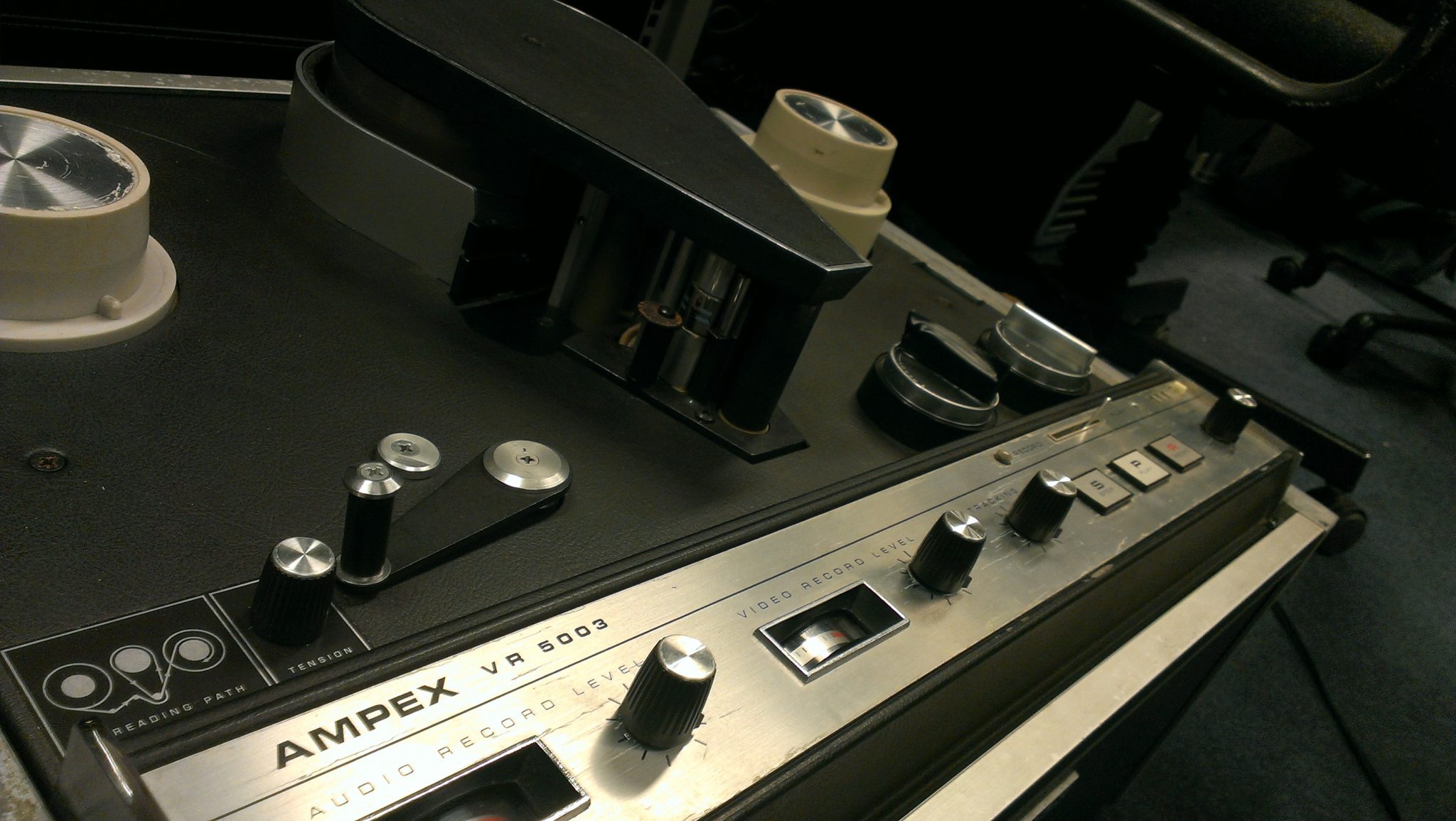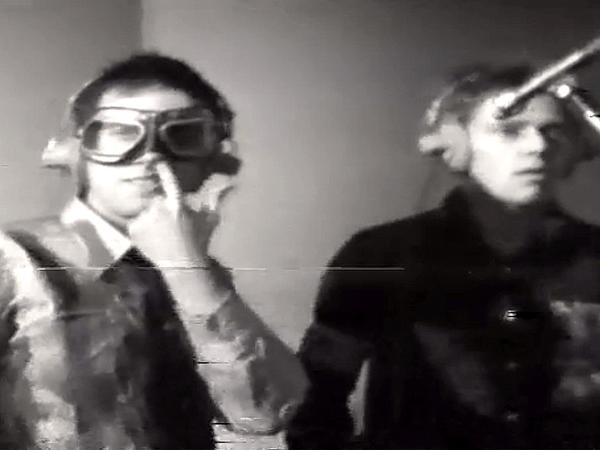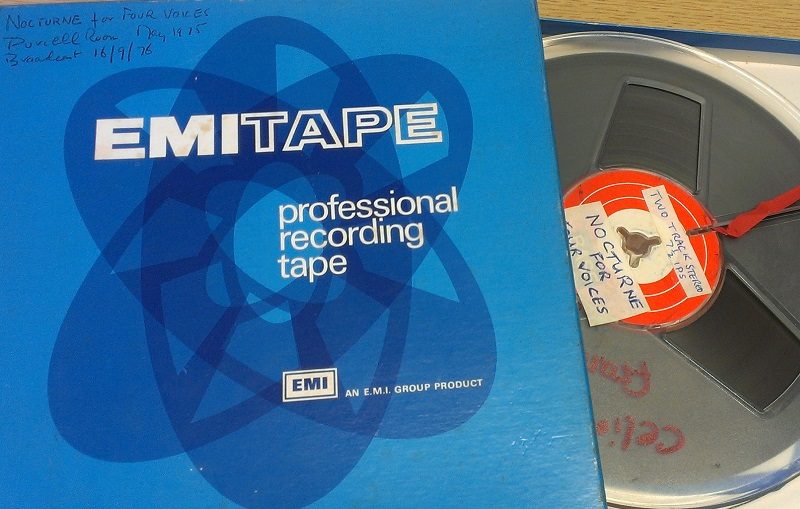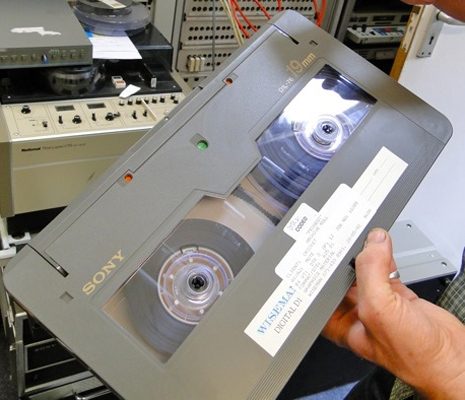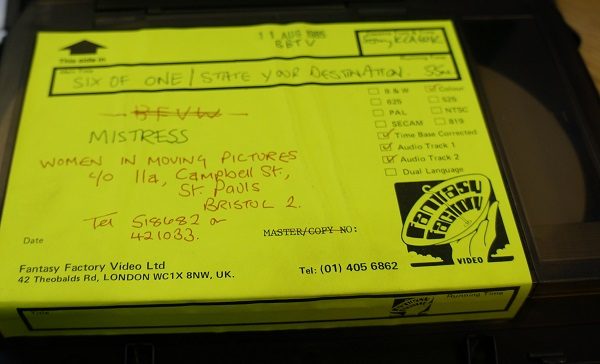Audio Cassette Parallel Ingests
The scale of digitisation jobs we do at Greatbear often varies. We are asked by our customers to reformat single items to large quantities of tape and everything else inbetween.
Reformatting magnetic tape-based media always takes time and care.
Transfers have to be done in real time;.. →
British Stand Up Comedy Archive’s audiovisual collections
Greatbear have recently worked with the British Stand Up Comedy Archive (BSUCA) to reformat a number of Digital Audio Tapes (DATs) and U-Matic video tapes from their collection.
Established in 2013 and based at the University of Kent’s Special Collections, the BSUCA aims ‘to celebrate,.. →
Save Our Sounds’ £9.5 million boost
This article is a bit late to break this news, but it is worth highlighting again in case you missed it first time round.
In May 2015 the British Library were awarded over £9.5 million pounds by the Heritage Lottery Fund to help them deliver their hugely important Save Our Sounds project.
We.. →
Phil Johnson’s the Wild Bunch VHS video
As a business situated in the heart of Bristol, Greatbear is often called upon by Bristol’s artists to re-format their magnetic tape collections.
Previously we have transferred documentaries about the St. Paul’s Carnival and films from the Bristol-based Women in Moving Pictures.. →
Type IV Metal Cassettes and Robert Chenciner’s Daghestan Collection
We recently received a fascinating collection of tapes from the archive of Robert Chenciner, an ethnographer with over thirty years experience studying the cultures, human rights and current affairs of Daghestan.
Daghestan is located in the north Caucasus region, its neighbouring countries.. →
Re-animating archives: Action Space’s V30H / V60H EIAJ 1/2″ video tapes
One of the most interesting aspects of digitising magnetic tapes is what happens to them after they leave the Greatbear studio. Often transfers are done for private or personal interest, such as listening to the recording of loved ones, or for straightforward archival reasons. Yet in some cases material.. →
Analogue to analogue – the Courtyard Music Group
Greatbear were recently approached by the Courtyard Music Group to help them complete the 100% analogue re-issue of their 1974 acid-folk album Just Our Way of Saying Hello.
Among Britfolk enthusiasts, news of the Courtyard Music Group’s plans to re-issue their album has been greeted with.. →
Videokunstarkivet’s Mouldy U-matic Video Tapes
Last year we featured the pioneering Norwegian Videokunstarkivet (Video Art Archive) on the Greatbear tape blog.
In one of our most popular posts, we discussed how Videokunstarkivet has created a state of the video art archive using open source software to preserve, manage and disseminate Norway’s.. →
Mouldy DATs
We have previously written on this blog about the problems that can occur when transferring Digital Audio Tapes (DATs).
According to preliminary findings from the British Library’s important survey of the UK’s sound collections, there are 3353 DAT tapes in the UK’s archives.
While.. →
Codecs and Wrappers for Digital Video
In the last Greatbear article we quoted sage advice from the International Association of Audiovisual Archivists: ‘Optimal preservation measures are always a compromise between many, often conflicting parameters.’ [1]
While this statement is true in general for many different multi-format.. →
IASA – Resources and Research
There are an astonishing amount of online resources relating to the preservation and re-formatting of magnetic tape collections.
Whether you need help identifying and assessing your collection, getting to grips with the latest video codec saga or trying to uncover esoteric technical information.. →
1″ Type A Video Tape – The Old Grey Whistle Test
Sometimes genuine rarities turn up at the Greatbear studio. Our recent acquisition of four reels of ‘missing, believed wiped’ test recordings of cult BBC TV show The Old Grey Whistle Test is one such example.
It is not only the content of these recordings that are interesting, but their.. →
Digitising small audiovisual collections: making decisions and taking action
Deciding when to digitise your magnetic tape collections can be daunting.
The Presto Centre, an advocacy organisation working to help ‘keep audiovisual content alive,’ have a graphic on their website which asks: ‘how digital are our members?’
They chart the different.. →
Save our Sounds – 2030 and the threat of audiovisual extinction
At the beginning of 2015, the British Library launched the landmark Save Our Sounds project.
The press release explained:
‘The nation’s sound collections are under threat, both from physical degradation and as the means of playing them disappear from production. Archival consensus.. →
1/2″ EIAJ video tape – aesthetic glitches
The screening of Julien Temple’s new film The Clash: New Year’s Day 1977 at New Year put the spotlight on a video format dear to our hearts.
Parts of the film were taken from footage shot on EIAJ 1/2″ video tape while Temple was at film school. EIAJ, whose hey day was.. →
DVCAM transfers, error correction coding & misaligned machines
This article is inspired by a collection of DVCAM tapes sent in by London-based cultural heritage organisation Sweet Patootee. Below we will explore several issues that arise from the transfer of DVCAM tapes, one of the many Digital Video formats that emerged in the mid-1990s. A second article will.. →
Reel-to-reel transfer of Anthony Rye, Selborne’s nature poet
We have recently transferred a number of recordings of the poet, Anthony Rye, reading his work. The tapes were sent by his Grandson Gabriel who was kind enough to tell us a bit more about Anthony’s life and work.
‘Anthony Francis Rye is intimately associated with the Hampshire village.. →
World Day for Audiovisual Heritage – digitisation and digital preservation policy and research
Today, October 27, has been declared World Day for Audiovisual Heritage by UNESCO. We also blogged about it last year.
Since 2005, UNESCO have used the landmark to highlight the importance of audiovisual archives to ‘our common heritage’ which contain ‘the primary records of the 20th.. →
Transferring Digital Audio Tapes (DATs) to digital audio files
At Greatbear, we carefully restore and transfer to digital file all types of content recorded to Digital Audio Tape (DAT), and can support all sample rate and bit depth variations.
This post focuses on some of the problems that can arise with the transfer of DATs.
An immature recording.. →
Phyllis Tate’s Nocturn for Four Voices 3″ 1/4 inch reel to reel tape transfer
We have recently transferred a previously unpublished 3” ¼ inch tape recording of British 20th century composer Phyllis Tate’s Nocturn for Four Voices. The tape is a 2-track stereo recording made at 7.5 inches per second (in/s) at the Purcell Room in London’s Southbank Centre in 1975, and was.. →
Obsolete technologies and contemporary sound art
At the recent Supernormal experimental arts and music festival held at Braziers Park, Oxfordshire, a number of artists were using analogue technologies to explore concepts that dovetail nicely with the work we do at Greatbear collecting, servicing and repairing obsolete tape machines.
Hacker.. →
Reports from the ‘bleeding edge’ – The PrestoCentre’s AV Digitisation TechWatch Report #02
Digital preservations, aesthetics and approaches
Digital Preservation 2014, the annual meeting of the National Digital Information Infrastructure and Preservation Program and the National Digital Stewardship Alliance is currently taking place in Washington, DC in the US.
The Library of Congress’s digital preservation blog The Signal.. →
D-1, D-2 & D-3: histories of digital video tape
Videokunstarkivet – Norway’s Digital Video Art Archive
We have recently digitised a U-matic video tape of eclectic Norwegian video art from the 1980s. The tape documents a performance by Kjartan Slettemark, an influential Norwegian/ Swedish artist who died in 2008. The tape is the ‘final mix’ of a video performance entitled Chromakey Identity.. →
New additions in the Greatbear Studio – BBC-adapted Studer Open reel tape machine
We recently acquired a new Studer open reel tape machine to add to our extensive collection of playback equipment.
This Studer is, however, different from the rest, because it originally belonged to BBC Bristol. It therefore bears the hallmarks of a machine specifically adapted for broadcast.. →
The difference ten years makes: changes in magnetic tape recording and storage media
Generational change for digital technologies are rapid and disruptive. ‘In the digital context the next generation may only be five to ten years away!’ Tom Gollins from the National Archives reminds us, and this seems like a fairly conservative estimate.
It can feel like the.. →
Digitisation: methodologies, processing and archival practices
We work with a range of customers at Greatbear, digitising anything from personal collections to the content of institutional archives. Because of this, what customers need from a digitisation service can be very different.
A key issue relates to the question of how much we process the digital.. →
Future tape archaeology: speculations on the emulation of analogue environments
At the recent Keeping Tracks symposium held at the British Library, AV scoping analyst Adam Tovell stated that
‘there is consensus internationally that we as archivists have a 10-20 year window of opportunity in which to migrate the content of our physical sound collections to stable digital.. →
Capitalising on the archival market: SONY’s 185 TB tape cartridge
In Trevor Owen’s excellent blog post ‘What Do you Mean by Archive? Genres of Usage for Digital Preservers’, he outlines the different ways ‘archive’ is used to describe data sets and information management practices in contemporary society. While the article shows it.. →
Going ‘tape-less’: AS-11 Digital Production Partnership standards
Is this the end of tape as we know it? Maybe not quite yet, but October 1, 2014, will be a watershed moment in professional media production in the UK: it is the date that file format delivery will finally ‘go tape-less.’
Establishing end-to-end digital production will cut out what.. →
Significant properties – technical challenges for digital preservation
A consistent focus of our blog is the technical and theoretical issues that emerge in the world of digital preservation. For example, we have explored the challenges archivists face when they have to appraise collections in order to select what materials are kept, and what are thrown away. Such complex.. →
Irene Brown’s reel to reel recordings of folk and Gaelic culture
We are currently migrating a collection of tapes made by Irene Brown who, in the late 1960s, was a school teacher living in Inverness. Irene was a member of the Inverness Folk Club and had a strong interest in singing, playing guitar and collecting the musical heritage of folk and Gaelic culture.
The.. →
Mistress or master? Digitising the cultural heritage of women’s movements
The Women’s Liberation Movement (WLM) is full of quirky examples of how womyn tried to wrestle culture from the sordid grip of male domination.
Part of this process was reinventing the world in wimmin’s image, word and song; to create and reclaim a lasting herstory in which sisterhood.. →
Seeing tracks: viewing magnetic information as an aid for tape digitisation
We use a Sigma Hi-Chemical MV-95 magnetic viewer in order to aid our digitisation work. By pressing the viewer against the tape we are able to read the magnetic information recorded on it. The reader helps us to visually identify the position of the recorded tracks on the tape, and enables accurate.. →
Digital preservation – a selection of online resources
Update 2020: We are updating and maintaining this list of useful web links in the Resources section of our website here: Digital and Audiovisual Preservation – Online Resources
If you are new to the world of digital preservation, you may be feeling overwhelmed by the multitude of technical.. →
Categories
- audio / video heritage (25)
- audio tape (123)
- digitisation expertise (20)
- video tape (107)


